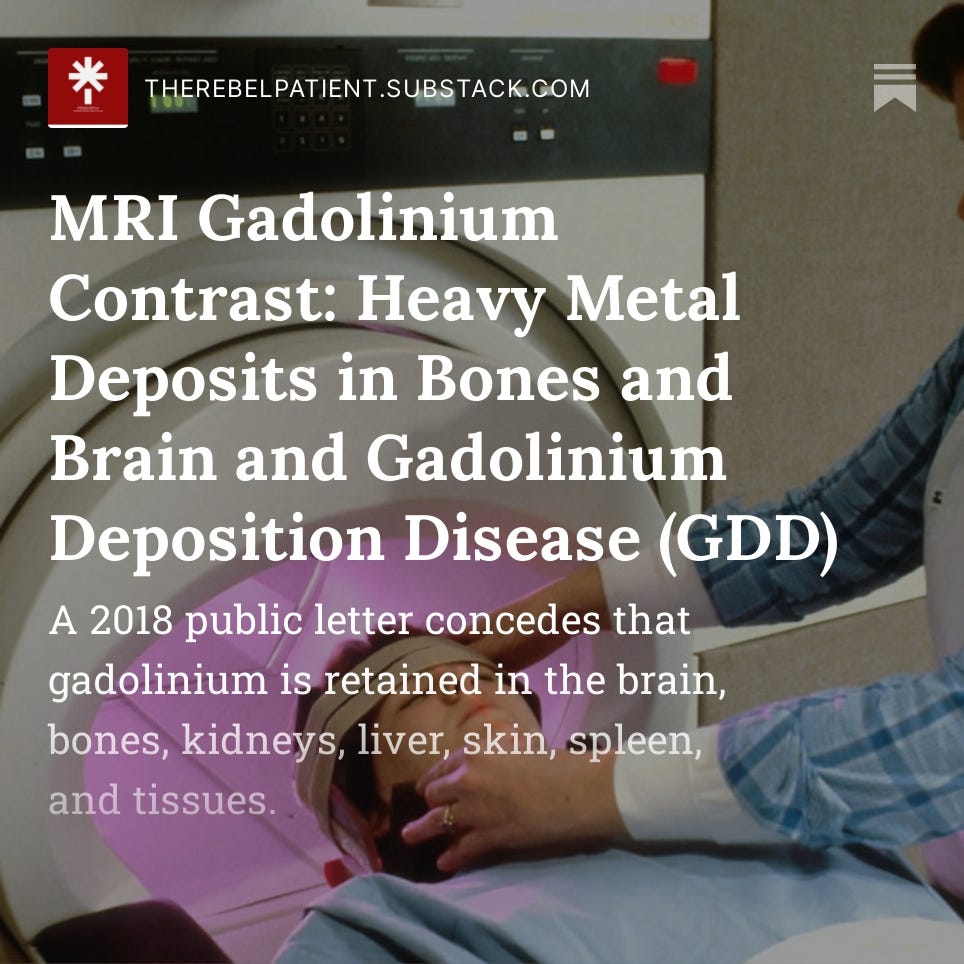MRI Gadolinium Contrast: Heavy Metal Deposits in Bones and Brain and Gadolinium Deposition Disease (GDD)
A 2018 public letter concedes that gadolinium is retained in the brain, bones, kidneys, liver, skin, spleen, and tissues.
Be Armed with Knowledge on Why MRI Gadolinium Contrast is Not Safe. Even the FDA admits to heavy metal retention in the tissues.
Going for an MRI? Know the risks of gadolinium. A common but controversial ingredient in IV contrast for MRIs, the heavy metal gadolinium has hidden but potent and potentially life-altering risks.
Informed consent should be a must for heavy metal toxicity, but it is usually minimized, as in the informed consent, shown below.
The FDA directed in a letter that heavy metal toxicity risks be provided for gadolinium. This letter is included, as well as key papers, sample informed consents, and a letter signed by four gadolinium manufacturers that admits to its retention in tissues.
“Gadolinium from gadolinium-based contrast agents (GBCAs) may remain in the body for months to years after the injection,” a letter signed by top executives from Bayer, GE Healthcare, Bracco Diagnostics, and Guerbet expressly states. “The highest concentrations have been identified in the bone, followed by other organs (brain, skin, kidney, liver, and spleen).”
Keep reading with a 7-day free trial
Subscribe to The Rebel Patient™ to keep reading this post and get 7 days of free access to the full post archives.





